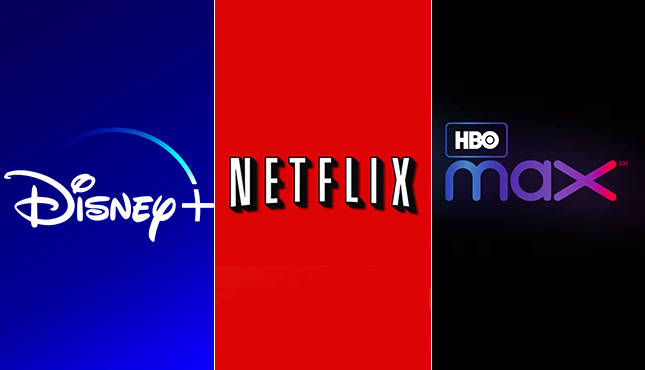Movies & TV / Columns
Who Will Win the Streaming Service Wars?
 Image Credit: Disney/Netflix/HBO Max
Image Credit: Disney/Netflix/HBO Max
A shift in TV viewing is coming. Disney’s Disney+ enters the streaming service business in a major way this fall and it will be the place to view Star Wars, Marvel movies and shows, all the Pixar movies, original programs, and their classic library.
The best part is the new streaming streaming service will cost $7 a month, half the price of HBO Now/Go and less than Netflix.
Buried under all the excitement is a number of others services that are vying for your dollar. So who will be the winners and losers in all this?
Disney, WarnerMedia, NBCUniversal and Apple are getting ready to launch, hoping to make some inroad on Netflix, Hulu, and Amazon, and while they may not need to be the number one in the U.S., a new study says that being in the Top 3 would certainly help. And let’s not forget that you have some dark horses out there like CBS All Access, to contend with.
For the average American who streams their TV media, they have three services and pay approximately $37 per month. When asked what they would prefer to pay, the Hollywood Reporter/Morning Consult poll found that $21 is the magic number, with many saying $17 to $27 is within acceptable.
You can imagine how WarnerMedia feels with their HBO Max is rumored to be $17 a month.
The early buzz leader is easily Disney+ and the biggest threat to Netflix’s dominance. With a rich library to draw from, thanks to its acquisitions, especially after grabbing the 20th Century Fox film and TV studio, name recognition, and dominance at the box office (Pixar, Marvel, and Star Wars), families on a budget will pick Disney+ as a no-brainer.
“Although original content drives initial engagement with streaming services, it is the library that keeps them there,” says Tim Mulligan of MIDiA Research. “This remains Netflix’s Achilles heel and is an area where both Disney and WarnerMedia could have a significant impact. Even though Netflix has ramped up its original content spend, with 85 percent of its 2018 content budget spent on original content, a third of total viewing on the platform is film content, where licensed third-party content dominates.”
Mulligan adds: “With 52 percent of Netflix paid subscribers now subscribing to multiple SVOD services, brand loyalty cannot be taken for granted by the leading incumbent.”
This fall will be very interesting in terms of who will be loyal and to what extent. Which services do you currently pay for and how will that change in the future?







